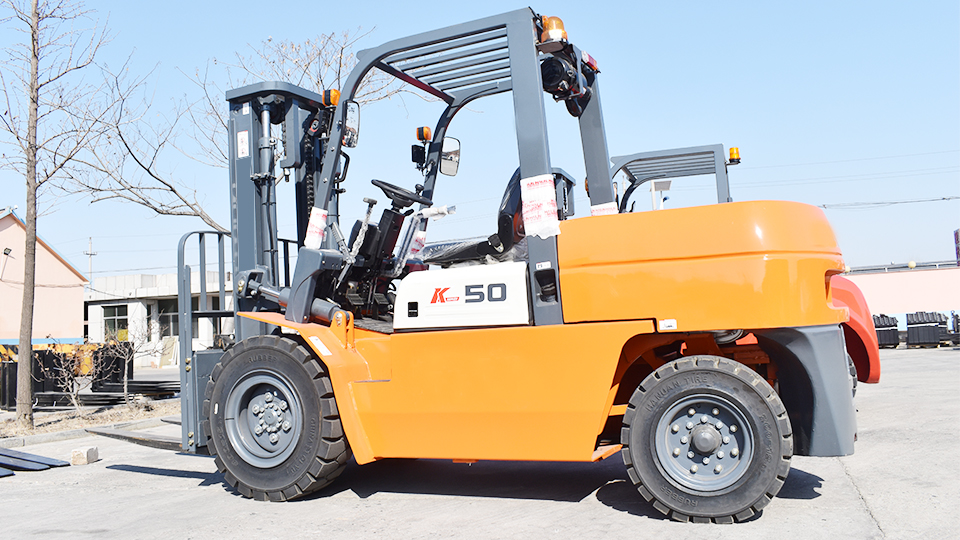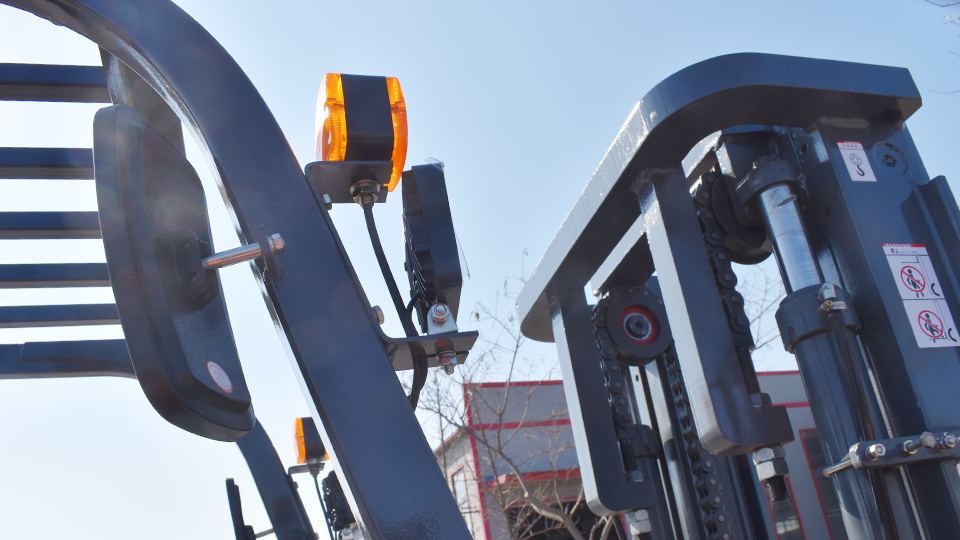how can you check the load capacity of a forklift
Assessing Forklift Load Capacity: A Comprehensive Technical Guide
Forklifts are indispensable tools in warehousing, logistics, and manufacturing, facilitating the efficient movement of materials. However, operating a forklift beyond its rated load capacity poses significant safety risks, including tip-overs, structural damage, and potential injuries. Accurately determining and verifying a forklift's load capacity is therefore paramount. This article provides a detailed technical overview of how to assess the load capacity of a forklift, encompassing considerations for both new and used forklift models, as well as specialized types like mini forklift and electric forklift units, including those manufactured by brands like Hangcha forklift.
1. Understanding the Load Capacity Plate (Data Plate): The Foundation of Safety
The primary source of load capacity information is the forklift's data plate, also known as the load capacity plate or nameplate. This plate is typically affixed to the forklift's frame, often near the operator's compartment. It contains crucial specifications, including:
Rated Capacity: This is the maximum weight the forklift can safely lift under specific conditions. It's often expressed in pounds or kilograms.
Load Center: This is the horizontal distance from the front face of the forks to the center of gravity of the load. It's crucial because the load capacity decreases as the load center increases.
Lift Height: The maximum height to which the forklift can safely lift the rated load.

Fork Dimensions: Length, width, and thickness of the forks.
Mast Type: The configuration of the lifting mechanism (e.g., simplex, duplex, triplex).
Model and Serial Number: Essential for identifying the forklift and accessing manufacturer specifications.
Manufacturer Information: The company that produced the forklift.
Key Considerations for Interpreting the Data Plate:
Load Center Variance: The rated capacity is based on a specific load center, usually 24 inches (600mm) for standard forklifts. If the load center exceeds this value, the actual load capacity will be lower. This is a critical point to consider when dealing with unusually shaped or sized loads.
Attachments: Any attachments added to the forklift, such as side shifters, fork positioners, or clamps, will reduce the overall load capacity. The weight of the attachment itself and its impact on the load center must be factored in.
Mast Height and Tilt: The load capacity may decrease at higher lift heights and with mast tilt. The data plate or the manufacturer's manual will provide specific information on these variations.
Condition of the Forklift: The rated capacity assumes the forklift is in good working order. Wear and tear, damage, and inadequate maintenance can significantly affect its actual load capacity. This is very important when evaluating a used forklift.
2. Visual Inspection and Mechanical Assessment:
Beyond the data plate, a thorough visual and mechanical inspection is essential to assess the forklift's condition and potential impact on its load capacity.
Fork Inspection:
Check for cracks, bends, and excessive wear. Forks that are damaged or worn can compromise their structural integrity and reduce their load-carrying capacity.
Ensure the forks are properly secured to the carriage and that the locking pins are in place.
Mast and Carriage Inspection:
Inspect the mast for damage, such as bends, cracks, and worn rollers.
Check the carriage for smooth operation and ensure the rollers and slides are in good condition.
Verify that the lift chains are properly lubricated and free from damage or excessive wear.
Hydraulic System Inspection:
Check for leaks in the hydraulic lines and cylinders.
Ensure the hydraulic oil level is adequate and the oil is clean.
Test the lifting and lowering functions to ensure smooth and consistent operation.
Tire Inspection:
Check tire pressure and condition. Worn or underinflated tires can affect the forklift's stability and reduce its load capacity.
Solid tires can also wear down and reduce the stability of the machine.
Frame Inspection:
Inspect the frame for cracks, bends, or signs of structural damage.
Electrical System (Electric Forklift):
For an electric forklift, check the battery condition and ensure it is fully charged. A weak battery can affect the forklift's performance and load capacity.
Inspect all electrical connections for corrosion or damage.
Test the motor and control system for proper operation.
Hangcha Forklift Specifics: If you are assessing a Hangcha forklift, consult the manufacturer's specific service manuals and technical bulletins for any model-specific inspection points or load capacity considerations.
3. Load Testing and Verification:
While the data plate and visual inspection provide valuable information, load testing is the most reliable way to verify a forklift's actual load capacity.
Static Load Testing:
This involves lifting a known weight to the maximum lift height and holding it for a specified period.
The forklift's stability, mast deflection, and hydraulic system performance are observed during the test.
The test weight should be gradually increased to the rated capacity and beyond, with careful monitoring for any signs of instability or structural stress.
Dynamic Load Testing:
This involves moving a known weight over a designated course, simulating typical operating conditions.
The forklift's stability, maneuverability, and braking performance are evaluated during the test.
This is very important for mini forklift units, which are often used in tight spaces.

Professional Load Testing:
It is highly recommended to have load testing performed by a qualified technician with specialized equipment and expertise.
They can provide accurate measurements and identify any potential safety hazards.
This is especially important when purchasing a used forklift, as the history of the machine is often unknown.
4. Factors Affecting Load Capacity in Specific Forklift Types:
Electric Forklifts:
Battery condition and charge level significantly impact the load capacity of electric forklift models.
The weight of the battery itself contributes to the overall weight of the forklift and must be considered.
The electric motors and control systems must be in good working order.
Mini Forklifts:
Mini forklift units are designed for compact spaces and lighter loads. Their load capacity is typically lower than standard forklifts.
Stability is a critical factor due to their smaller size and wheelbase.
Floor conditions are very important for small forklifts.
Used Forklifts:
The history and maintenance records of a used forklift are essential for assessing its load capacity.
Wear and tear, damage, and modifications can significantly affect its performance.
Professional inspection is highly recommended.
Hangcha Forklifts:
Hangcha forklift models, like any other brand, have specific load capacity ratings and technical specifications.
Always refer to the manufacturer's documentation for accurate information.
Ensure that any maintenance or repairs are carried out by qualified technicians using genuine Hangcha parts.
5. Safety Precautions:
Always wear appropriate personal protective equipment (PPE), such as safety shoes and a hard hat, when operating or testing a forklift.
Ensure the work area is clear of obstructions and personnel.
Never exceed the rated load capacity of the forklift.
Follow proper operating procedures and safety guidelines.
Regularly inspect and maintain the forklift to ensure it is in good working order.
By understanding the load capacity plate, conducting thorough inspections, and performing load testing, you can ensure the safe and efficient operation of your forklift. Remember that safety is paramount, and any concerns about a forklift's load capacity should be addressed by a qualified technician.


